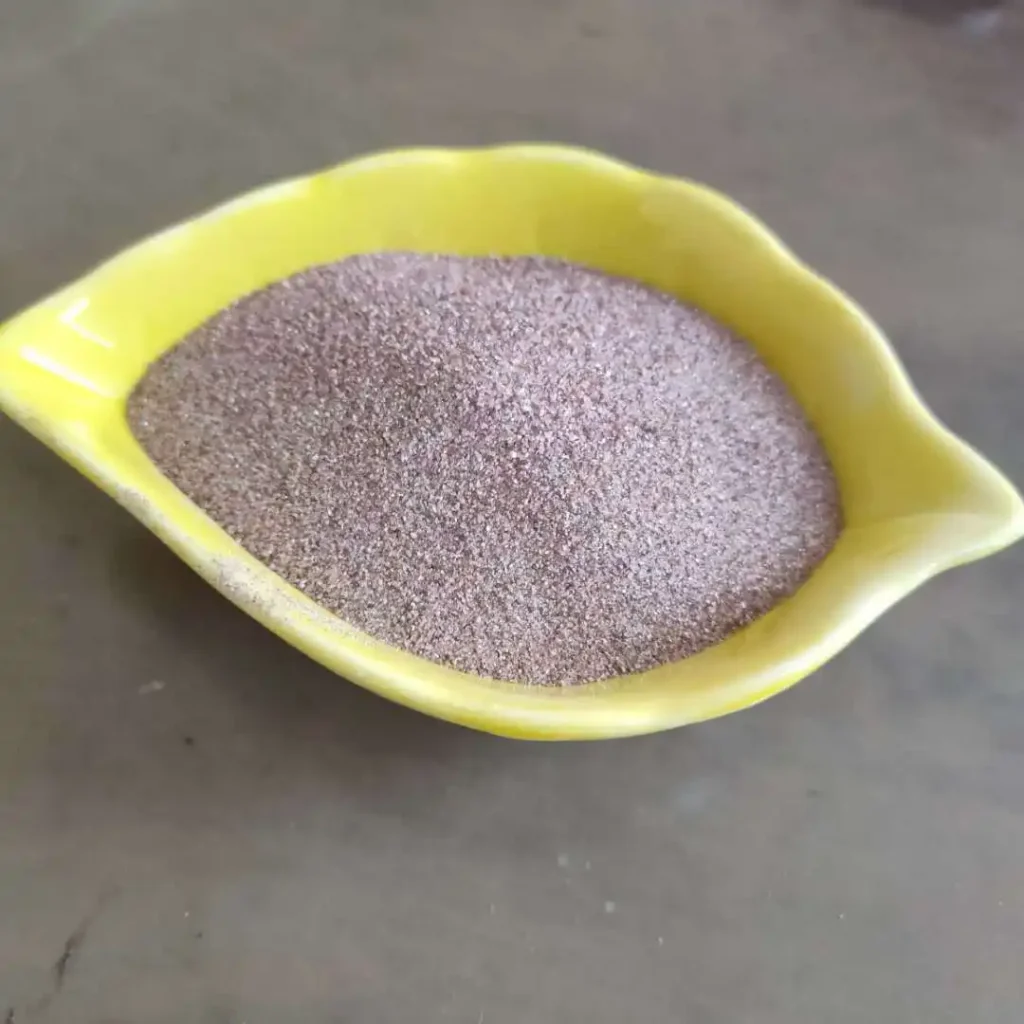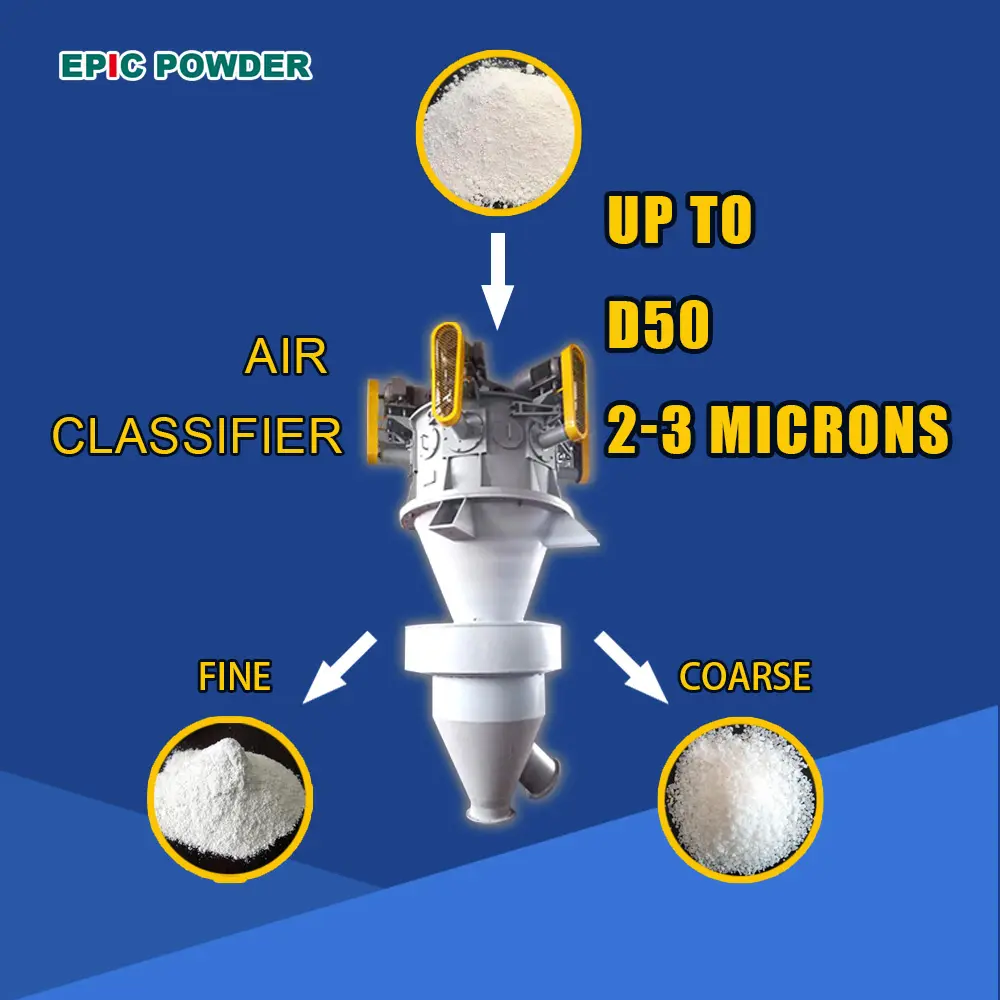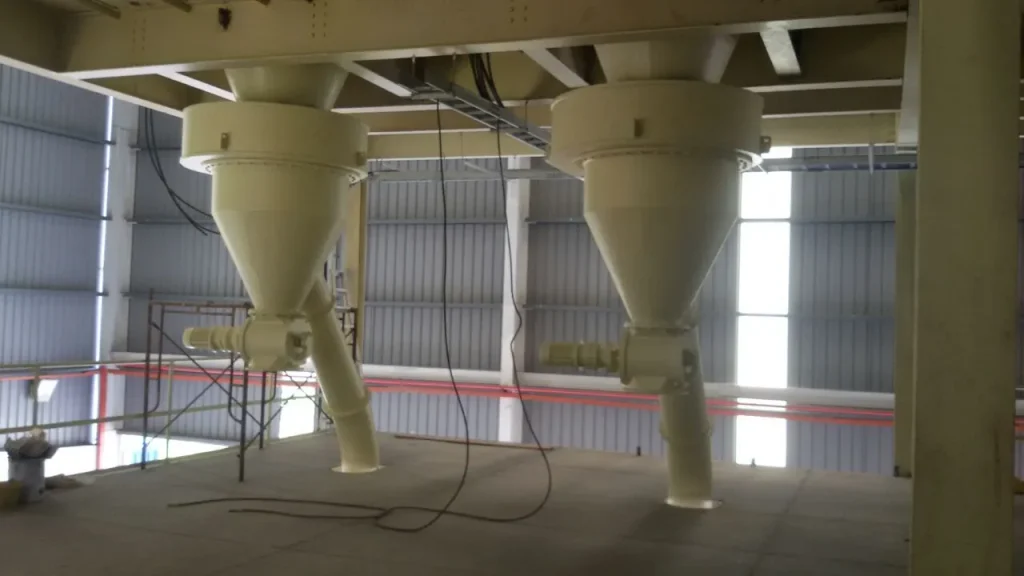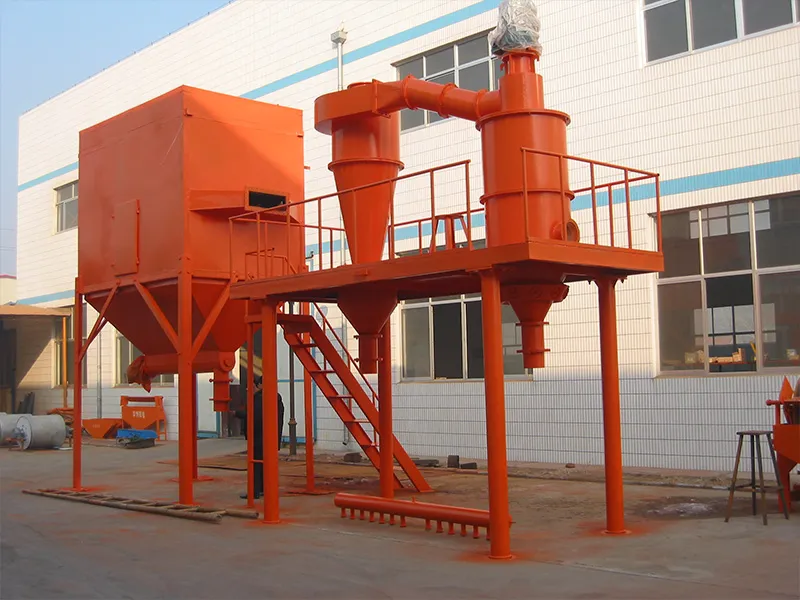Zircon sand, primarily composed of zirconium silicate (ZrSiO4), is a highly valuable industrial mineral widely used in ceramics, refractories, foundries, and advanced material applications. Renowned for its high melting point (>2200°C), hardness (Mohs ~7.5), chemical inertness, and opacity, zircon sand is a key component in producing durable ceramics, sanitary ware, and heat-resistant materials. These properties drive its steady demand in many sectors globally. Air classifying mills (ACM) are highly effective for processing zircon sand due to their precision energy efficiency, and operational flexibility.

Why is Classification Grinding Essential for Zircon Sand?
Raw zircon sand typically arrives at processing plants with a broad particle size distribution ranging from 200 to 300 microns or larger. However, many applications require finely ground zircon powders with controlled particle size distribution to ensure product performance and processability. Classification grinding combines size reduction and particle size separation in an integrated closed-loop milling system. This enables:
• Consistent targeting of desired particle size fractions (e.g., D50 between 0.8 and 1.5 microns).
• Minimizing oversized particles that can affect sintering and material strength.
• Improved product uniformity and surface finish in ceramic and refractory products.
• Enhanced grinding efficiency and energy savings by recycling coarse material.
Why Use Air Classifying Mills for Zircon Sand?
Air classifying mills (ACM) are highly effective for processing zircon sand due to their precision, energy efficiency, and operational flexibility. They leverage a high-speed rotor for grinding combined with a dynamic classifier wheel to separate fines from coarse particles.
Key advantages include:
• Integrated Grinding and Classification: Ensures narrow particle size distribution with customizable fineness settings.
• Material Purity: Key wear parts are made from ceramic or wear-resistant materials, minimizing metallic contamination which is critical for high-purity zircon powder production.
• Closed-Circuit System: Maintains low dust emissions, noise, and environmental impact during grinding.
• Energy Efficiency: Lower power consumption compared to traditional milling systems, supporting sustainable production goals.
• Versatility: Suitable for various feed sizes and capable of producing multiple product grades simultaneously.

Data Insight and Performance Parameters
Industry data confirms the efficacy of air classifying mills in zircon sand processing:
| Parameter | Typical Value | Application Insight |
| Feed Size | Below 200-300 microns | Suitable for milling feed |
| Product Particle Size (D50) | 0.8 – 1.5 microns | Optimal for ceramic and refractory quality powders |
| Purity Levels | Iron contamination increase <0.01% | Ensures high-grade zircon product |
| Throughput | Up to several tons per hour depending on equipment scale | Supports large-scale industrial operations |
Maintaining product purity by avoiding iron and aluminum contamination, which must be kept very low, is crucial for functional zircon powder. Alumina linings and grinding media are optimized to reduce wear and maintain consistent high quality.

Market and Industry Analysis
The global zircon sand market was valued at approximately USD 2.22 billion in 2024 and is projected to grow at a Compound Annual Growth Rate (CAGR) of 8.1% through 2031. Key growth drivers include:verifiedmarketresearch+1
• Expanding use in ceramics, with over 60% of zircon sand directed toward ceramic tile and sanitary ware production.
• Increased demand in foundry and refractory applications due to zircon’s thermal stability and high melting point.
• Emerging electronics and nuclear power industries requiring high-purity zircon materials.
• Regional growth concentrated in Asia-Pacific (especially China and India), driven by rapid industrialization and infrastructure development.
EPIC Powder Machinery’s Expertise in Zircon Sand Grinding
With over two decades’ experience in ultrafine powder processing, EPIC Powder Machinery offers specialized air classifying grinding solutions tailored for zircon sand. Our ACM mills feature:
• Precision rotor and classifier design enabling narrow particle size control with minimal agglomeration.
• Use of wear-resistant ceramic components for contamination-free milling.
• Integrated closed-system architecture for energy-efficient, dust-minimized operation.
• Customizable configurations suitable for a range of scales, from pilot lines to full production.
Through customer-focused engineering and ongoing support, EPIC Powder Machinery helps clients optimize zircon sand milling processes, improving product yield, consistency, and cost-effectiveness.
Conclusion
Air classifying mills represent an advanced, efficient technology for zircon sand grinding, enabling precise control over particle size distribution while preserving product purity and minimizing environmental impact. With the zircon sand market poised for strong growth worldwide—driven by demand across ceramics, refractories, and high-tech fields—investing in state-of-the-art milling equipment like those from EPIC Powder Machinery positions producers for success in a competitive landscape.

